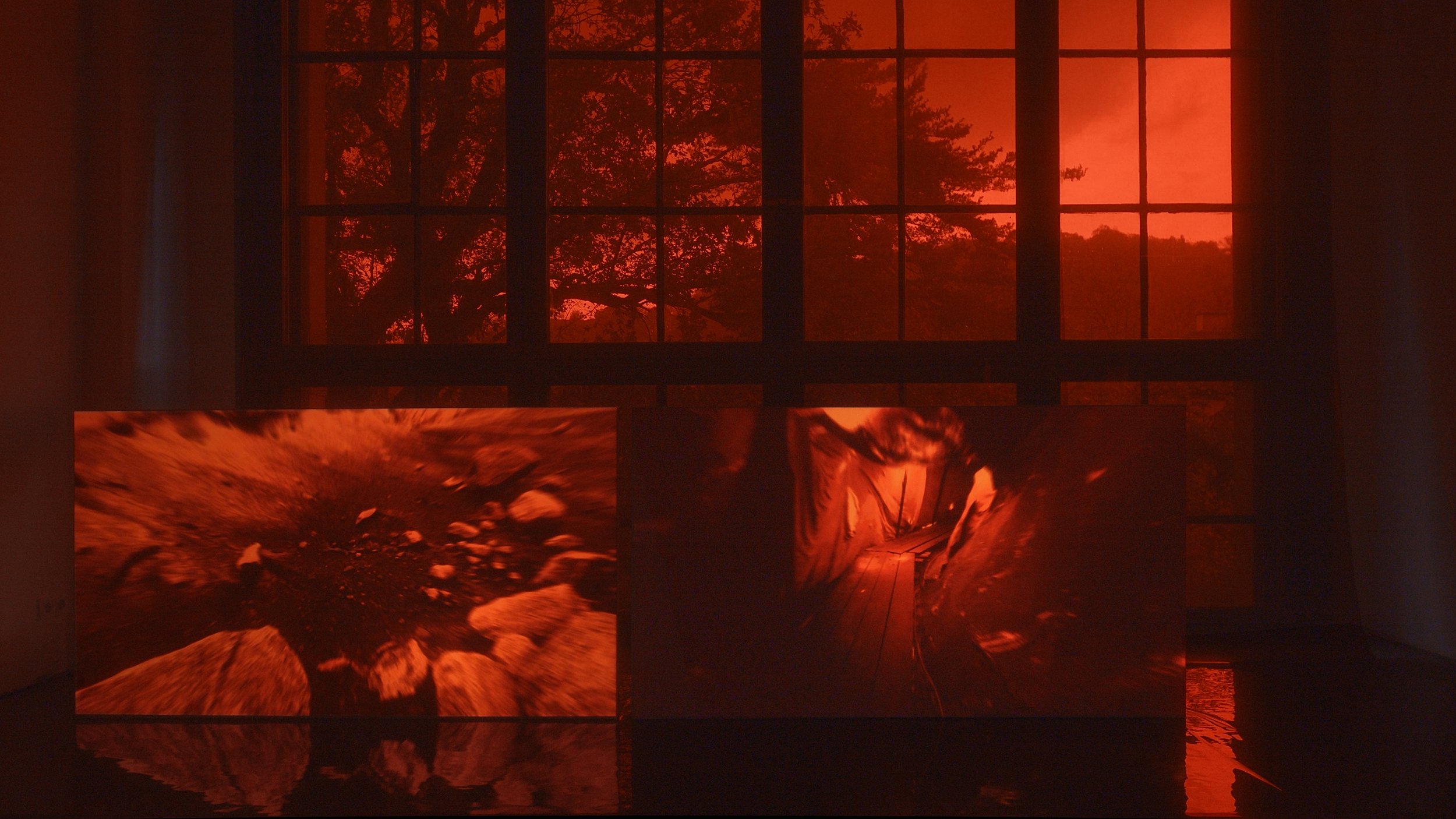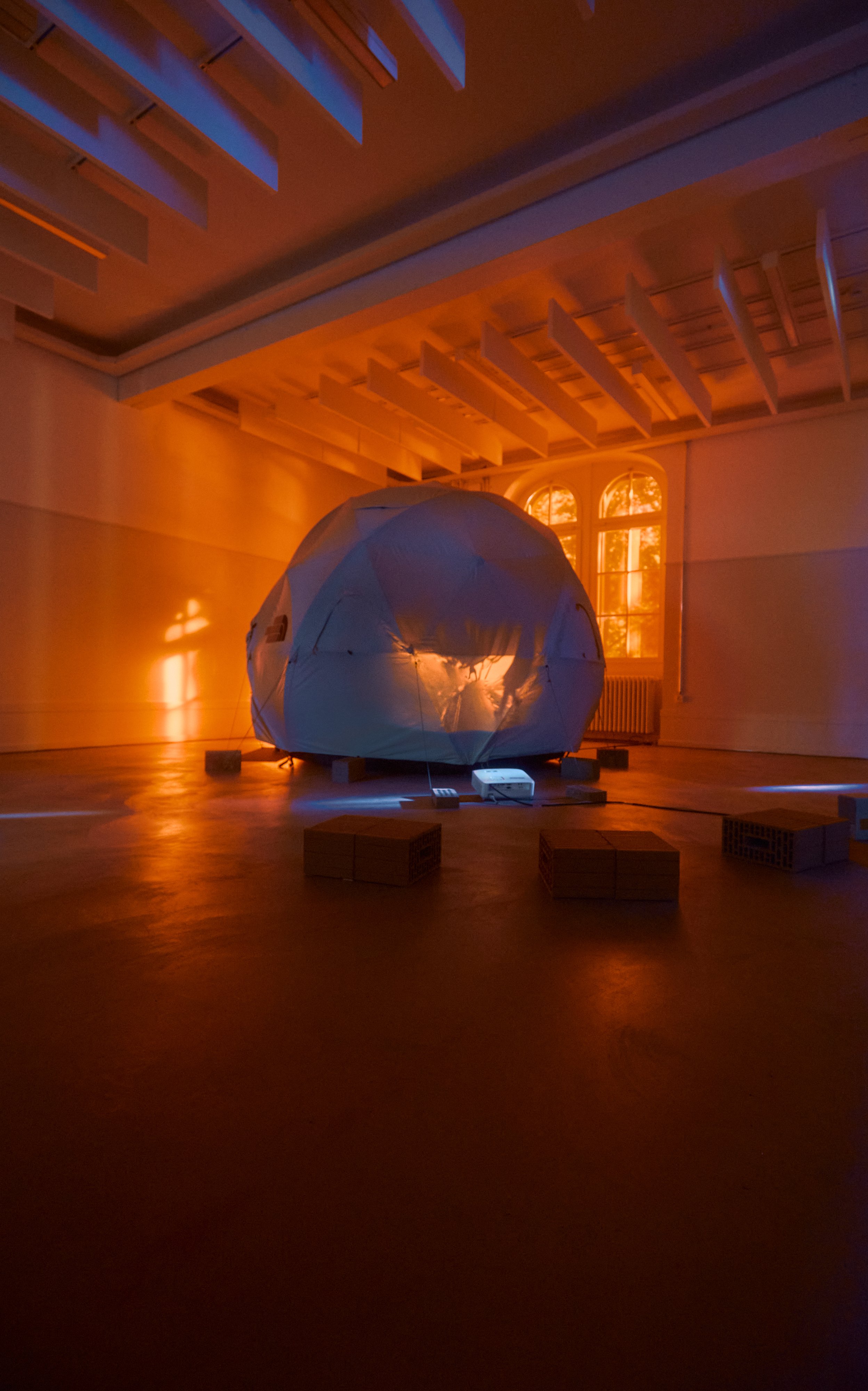
There is a certain feeling of violenece when I step on ice with crampons, evoked by the conciousness of the instable ice mass. How are exploration and catastrophe linked together in times of an increased visibility of socio-ecological change? And how are bodies and (media) landscapes baring witness to this change? «ex-de-plora» investigates the «epistemic violence of discovery» (Heather Davis) in glacial landscapes, negotiating my ambiguous roles as an artist, witness and accomplice.
«The catastrophe without event is characterized by disparate, diffuse, and ultimately undefinable scenarios, temporalities, localities, and processes. The bleak underlying feeling today is that the continuation of the present will inevitably lead to a radical break or collapse. No one knows, however, exactly how this will come about.» (Eva Horn in Future as Catastrophy, 2022)
multi-media installation (2022)
Originating from expeditions to the geotextile covered Rhone Glacier and to the scientifically and touristically popular Colle Gnifetti on 4’500 meters altitude, «ex-de-plora» sets glacier expeditions and socio-ecological catastrophe into relation through their close proximity to immediate danger and fragility. The multi-media installation draws inspiration from dominant visual cultures of exploration and catastrophe in the 21st century: through unedited action-camera recordings (e.g. GoPro), which are often used in alpine expeditions and witness videos on social media, as well as through the filtered darkorange color tint, present in popular fictions and documentaries (e.g. San Francisco Wildfires 2020, Sahara Sand in Switzerland / Germany 2022, Blade Runner 2047, Visualisations of Mars Inhabitation etc.). The red tint can also remind us of acid film base degradation present in arhival film, in thus in the degradation of the medium itself.
The installation creates a space which becomes blurry in its temporal dimensions through the juxtaposition of slow-motion imagery, tangible objects and the gaze through the colored transparent slides on the immediate environment of the exhibition space. «ex-de-plora» provokes a hybrid experience that a is anxious and urgent as well as calm and thought-provoking.
An important moment in the installation is occupied by the imperative «Never Stop Exploring», the motto of the leading outdoor equipment brand The North Face which is universally present on glacial landscapes, putting thin layers of fabric between bodies and increasingly harsh environments. «ex-de-plora» tries to comprehend this imperative in its resonance with excessive modern practices and its own complicity. «Never Stop Exploring» resonates with violent histories and contemporaries of north-western exploration. Such exploration – scientific, touristic, artistic or colonial – has in large fostered power structures which define socio-ecological relation until this day. Such power structures are especially present in technologies which resulted from such (western) exploration and socio-ecological exploitation. Nevertheless, technologies have long been imagined as a key solutions to socio-ecological. This is paradigm is evident in the the uncanny midcentury vision of architect and philosopher Richard Buckminster-Fuller, who proposed landscapes enclosed in his large geodesic domes, cybernetic informatio centers. Since Buckminster-Fullers prototype in the 1960s, the environmentally resistant geodome structure keeps re-entering the ecological discours until this day, reshaping imaginaries of futuristic, (post-)crises living. The North Face itself has worked with Fuller in the 1970s to adapt the geodesic structure for their tents and later printed the dome shape on their t-shirts to promote the quoted brand motto. Both t-shirt and tent are displaced artefacts present in «ex-de-plora».
-
Eva Horn (2014): Future as Catastrophe. Columbia University Press.
Gyorgy Kepes et al. (1972): Arts of the Envorinment (Vol 6 of «Vision + Value).: George Barlitzer.
Lydia Kallipoliti (2018), The Architecture of Closed Worlds. Storefront for Art and Architecture.
T.J. Demos, Emily Eliza Scott, Subhankar Banerjee (2021): The Routledge Companion to Contemporary Art, Visual Culture, and Climate Change. Routledge.



